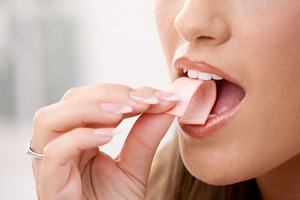
Gum chewing is a very common habit. In fact, it has been shown that the average American chews around 300 pieces of gum annually. But what if you currently have a TMJ disorder? Could continuing to chew gum end up causing further problems for your jaw? Your dentist is here to give you a closer look at TMJ disorder and explain why chewing gum may end up exacerbating the issue.
What is TMJ Disorder?
TMJ disorder involves your temporomandibular joints (TMJs for short). These joints are on either side of your head and are responsible for the movement of your jaw. If the TMJs are damaged or exposed to too much stress, the result is a TMJ disorder. This can cause you a significant amount of pain, and it can make it difficult to open and close your jaw. Furthermore, TMJ disorder is known to cause headaches.
How Can Chewing Gum Worsen Your TMJ Disorder?
It goes without saying that chewing gum requires you to use your jaw muscles. If you chew gum too often, you can end up significantly overworking these muscles, which can contribute to TMJ disorder. On top of that, chewing gum can cause your facial muscles to tighten, thus making any headaches that you’re currently experiencing even worse.
Do You Need to Give Up Gum If You Have a TMJ Disorder?
People with TMJ disorders should definitely avoid excessive gum chewing if they don’t want to make their symptoms worse. However, a moderate amount of gum chewing is often fine. Pay attention to your symptoms while you’re chewing your gum; if you start to experience a headache or jaw pain, that’s a sign that you should take a break for a while.
What Can You Do to Relieve TMJ Pain?
In addition to staying away from habits that can make the pain worse, you can also manage a TMJ disorder by taking anti-inflammatory medication. It can also be a good idea to apply a warm compress to your jaw joints. Diet can also make a difference; try switching to softer foods that require less chewing for a while.
You can also talk to your dentist to see what treatment options are available for TMJ disorder. Sometimes they may perform occlusal adjustments to help your teeth come together properly so that your bite doesn’t put too much pressure on your jaw joints. They could also recommend an occlusal splint that adjusts the position of your jaw so that the TMJs can rest.
TMJ disorder is definitely not a problem you want to ignore, so make sure you’re aware of how gum chewing and other oral habits might be affecting your symptoms.
About the Author
Dr. Rashpal Deol first studied dentistry in India, but he eventually moved to the United States, where he earned a Master of Science in orofacial pain at the University of Southern California School of Dentistry. His practice is able to provide occlusal adjustments and occlusal splints to help patients find relief from TMJ-related pain. To schedule a consultation with Dr. Deol at Oak Ridge Dental in San Ramon, visit his website or call (925) 735-6190.




